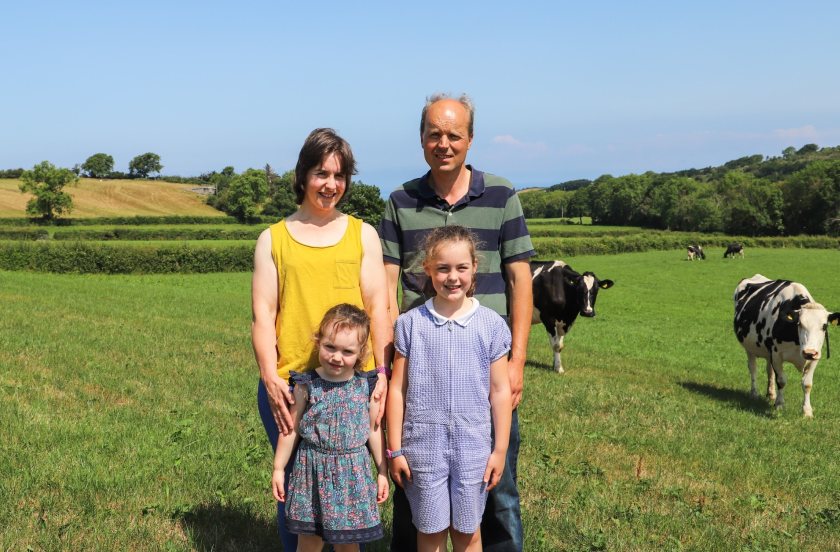
A Welsh farming family is undertaking a project exploring the potential of white clover to improve nitrogen use efficiency and boost milk and meat production.
Deryl and Frances Jones rely entirely on grass and silage to feed their herd of 120 Holstein Friesian dairy cows, Texel cross Charollais sheep flock, and beef cattle, with nitrogen fertiliser a major input cost for their production.
The family, who farm at Rhyd Y Gofaint Farm, Ceredigion, is now exploring the potential of white clover to further improve their dairy farm's efficiency.
Independent grassland specialist Chris Duller, who is supporting the family, says he is optimistic about the project: "White clover has potential to reduce fertiliser use and boost animal performance," he says.
"The Jones family experiment with different varieties and monitoring is a great way to find the best approach for their farm."
The project, which is being spearheaded by the Welsh government-funded Farming Connect initiative, investigates white clover, a legume that offers a natural solution to this challenge.
With nitrogen-fixing bacteria in its roots, white clover captures atmospheric nitrogen and converts it into a plant-usable form through a natural process.
This biological nitrogen fixation can potentially replace up to 150kg/ha of synthetic fertiliser, leading to significant cost savings. Reduced synthetic fertiliser use can also help to lower greenhouse gas emissions and improve water quality.
The benefits of white clover extend beyond cost reduction. It boasts the highest digestibility of common grassland plants and a high crude protein content, resulting in increased quality pastures for grazing animals.
Irish research provides compelling evidence. Dairy farms transitioning to clover-based swards have halved their nitrogen fertiliser use while maintaining or even increasing milk production.
Notably, one project achieved national average milk output with just half the national average fertiliser input, demonstrating the power of clover.
The project explores two approaches for maximizing white clover's potential:
• Overseeding existing swards: This method will compare standard white clover with a hybrid variety at different seeding rates.
• Potential full reseeding (weather permitting): Depending on weather conditions, the project might explore a full reseeding option, involving and surface cultivation.
The project will monitor clover establishment, dry matter production, sward quality, and botanical composition throughout the growing season.
Additionally, milk yields and quality will be tracked to assess the impact on overall production.
By closely monitoring the experiment's progress, the Jones family aim to determine the optimal N fertiliser application rate for clover-dominant swards.
This will allow them to further reduce costs while maintaining or increasing production.
Deryl Jones added: 'We are interested as to whether including more legumes in our sward can work in Rhyd y Gofaint.
"If the white clover experiment is successful, we would hope to see a reduction in fertiliser costs coupled with improved constituents in our milk."
